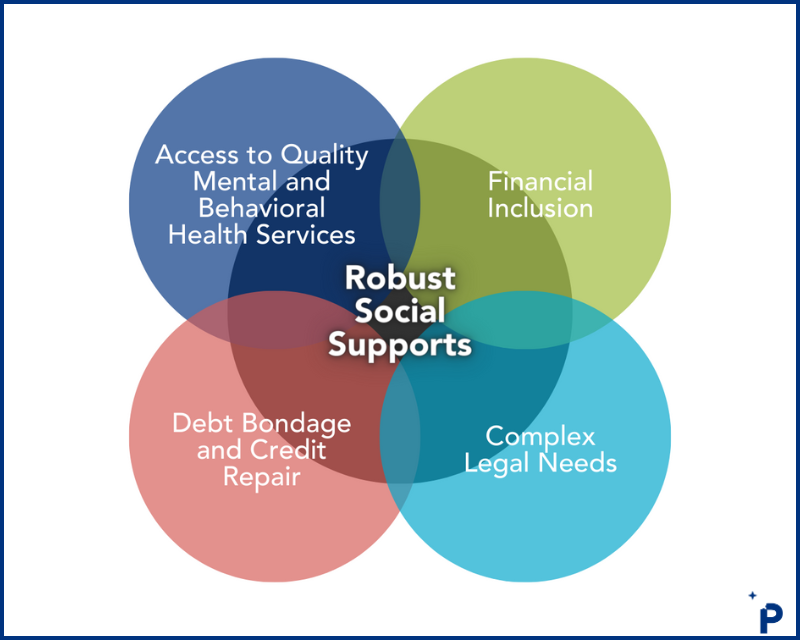
Imagine a world where illness and disease were never divided into diagnoses. Doctors simply aimed to cure the general topic of “sickness.” We didn’t differentiate cancer from a broken leg, or heart disease from the flu. In this world, doctors would treat a sore throat with stitches or poor vision with chicken soup. How effective would that be? Our Survivor Engagement Advisor, Lara Powers, puts it best:
“Imagine there was this new disease that was killing kids. Imagine this disease was transmitted through saliva. Imagine that there was then a social media post that said this disease wasn’t transmissible between kids unless they had fevers. Then this post went viral to an already very misinformed public. What does this mean? It means parents and teachers and bus drivers and cafeteria workers are looking for the kids with fevers while the rest of the class swaps juice boxes.”
Just as different diseases affect distinct parts of the body and require specialized treatments, the crime of human trafficking manifests in many different ways. But for the last 15 years, people in the anti-trafficking field have struggled to identify and disrupt human trafficking networks in the United States. One of the most significant challenges we’ve face is a lack of data that show how human trafficking operates.
Each manifestation attracts certain kinds of traffickers, exploits different kinds of victims, and affects specific areas of the economy. However, traditionally, there are only two broad categories of human trafficking: sex trafficking and labor trafficking. Relying on these as umbrella terms means that counter-trafficking efforts are often overly generalized and therefore are not as effective as they could be. We’ve been battling a blurry image of what trafficking actually looks like. Until now.
Today, we released The Typology of Modern Slavery, a first-of-its-kind classification system that identifies the 25 main types of human trafficking in the United States. In order to develop this system, our research team analyzed more than 32,000 cases of human trafficking from the National Human Trafficking Hotline and Polaris’s BeFree Textline — the largest data set on trafficking in the U.S. ever compiled and publicly analyzed.
Why do we need to identify and differentiate different types of trafficking?
Because from sex trafficking within escort services to labor trafficking of farm workers, the ways humans are exploited differ greatly. Each type of trafficking has its own unique business model, trafficker profiles, recruitment tactics, victim profiles, and methods of control.
By breaking this “crime of crimes” down into distinct types, we are not only able to equip the general public with a clearer vision of what trafficking actually looks like in their communities, but we can begin to develop strategic campaigns to spur systematic action, unite disparate efforts, allocate limited resources, and facilitate effective interventions to combat the crime.
In reality, there are likely hundreds of ways one could define the various manifestations of human trafficking in the U.S. Ultimately, we decided to create the Typology based on what traffickers care about most — their wallets. By sorting the issue by business model, we can to close policy loopholes and adopt safeguards that make it more difficult for bad actors to abuse vulnerable and at-risk populations for profit.
It’s especially important to note that we had no intention of trying to speak to or neatly classify individual survivor experiences. Such a feat is impossible and insensitive due to the extremely personal impact trafficking has on survivors. But recognizing the heterogeneity of the survivor experience also creates more pathways for meaningful engagement of lived experience in each type. Allowing survivors to reclaim and define their narratives is fundamental in our approach.
We are continuing to dive deeper into each type to reveal even more nuances and ways to disrupt the success of traffickers. This includes engaging survivors, practitioners, governments, other leaders/professionals, industry stakeholders, and corporate partners.
Are you a trafficking survivor or an expert or practitioner in the anti-human trafficking field? We want to hear from you! Tell us your ideas about how we can refine this classification system and make it even more accurate.
Together, led by survivor voices and input, we will continue to use our data in a way that provides an evidence based understanding of how human trafficking business models operate, so that anti-trafficking advocates and stakeholders can develop accurate, strategic, and effective responses to eradicate modern day slavery.
Click here to read and download The Typology of Modern Slavery.


